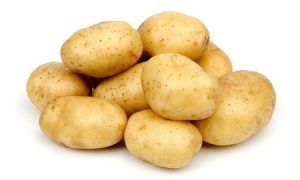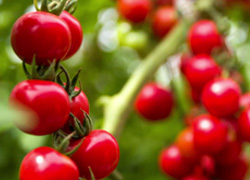What is Hydroponics?
Hydroponics refers to the art of cultivating plants without using soil. It is part of hydro-culture that basically implies growing crops in an aquatic environment instead of terrestrial.
There are several types of hydroponics, and it does not mean that plants grow with their roots suspended in water.
However, such kind of hydroponics is referred to as nutrient film technique (N.F.T). The solution used in this type is constantly flowing through the growing tray, and it is pumped from the reservoir.
Other hydroponics systems include wicks system, which uses a growing media such as soil, per-lite or coco. There is water culture system, a type of an active hydroponics system, ebb and flow system where the growth technology nutrient solution floods the growth tray before draining off.
The drip system that uses elevated water jets to supply plants with the growth nutrient solutions. And, an aeroponic system where the roots of the crops are misted with the nutrient solution and the main growing media is air.
Hydroponics: How it Works?
In hydroponics gardening, you need to have a growing tray, lighting, a reservoir and air pump and above all the growth nutrient solution. The main elements for hydroponic gardening include water with nutrients for plant growth as well as air.
The solution is always moving through the growing tray and needs to be availed by using a pump and drain system to enhance the flow of nutrient solution.
Hydroponics is not all about putting plants in water and expecting them to grow naturally. Without the solution, then hydroponics gardening would be a facade.
With technology advancements in hydro-culture, you can automate your hydroponics system by automating the flow of the nutrient solution with a timer. On top of that, it helps regulate the amounts of necessities needed to support growth of the plants.
Is Hydroponics Better than Growing in Soil?
When it comes to hydroponics gardening, all the nutrients a plant need to grow are provided. Contrary to soil medium gardening, the plants need to source the nutrients from the soil.
On top of that, fertilizers used in plants grown in soil do not include all the essential micro-nutrients a plant needs to grow well.
So, hydroponics appears to be better for crop cultivation compared to growing crops in soil. In addition to that, in hydroponics, all the necessary conditions for crops growing is regulated to the right levels. As for crops growing in soil, they are exposed to harsh weather conditions and poor conditions for cultivation.
What Do You Need To Setup Hydroponic?
Hydroponic can be used in large-scale farming as well as small-scale farming. That means, you can actually setup a hydroponic system in your home. But before that, you need to acquire the right materials to setup.
There are available hydroponic ready made kits which you can purchase from the store and follow the manual to setting up.
Alternatively, you can build your own hydroponic system using available materials at home. The aim is finding the right kit that suites your needs and how much you want to cultivate. So, you need a transparent container or basin that has a lid cover and can hold water.
You also need mesh pots to hold the plants in place; a grow cube, the nutrient solution, delivery system, an air hose, a reservoir, an air pump plus a submersible pump.
Other than that, you can have a measuring equipment to ensure that you are feeding the crops with the right amount of nutrient solution. For indoors hydroponic gardening, you may require growing lights in place of natural sunlight.
Importance of Lighting for Hydroponic
Lighting is important because it is one of the major provisions required for crop cultivation.
Furthermore, with the right amount of lighting, you can grow any crops indoors. What you need to be cautious about is the level of lighting needed for different plants.
Speaking regarding science, plants need light so that they can turn it into energy through photosynthesis. There are a number of grow lights out there which you can buy to ensure your crops have all it takes to grow properly in water.
Advantages and Disadvantages of Hydroponic
There are advantages and disadvantages that come with hydroponic gardening. As good and efficient hydroponic may sound, there are a few unavoidable challenges that come with the system.
The most beneficial thing about hydroponic is that with the right amount of required growth ingredients and setup, crops can mature up to 25% times faster and produce more crops compared to soil gardening.
This is because all the required nutrients are provided for the plant, so they do not have to use a lot of energy to acquire the same nutrients.
However, that will only be the case if you have regulated the pH levels and nutrient content of the growth solution.
The disadvantages with hydroponics can be related to the technical part of hydroponics. You need to learn how to manage the system, so your plants can grow in favorable conditions.
On top of that, you need to invest quite a lot of money to setup the systems. This is because you need to buy all the equipment necessary for the hydroponic system to be setup including pumps that are not cheap.
Finally, you are not guaranteed you will get the right sizing for the growth tray.






Comments are closed.